Jan 25, 17 · A function f (x) and g (x) then (f g) (x) = x² x 6 Further explanation Like the number operations we do in real numbers, operations such as addition, installation, division or multiplication can also be done on two functionsIs there a single realvalued function, continuous f 100,∞ → R such that f (f (x)) = logx for every x in its domain?F (g (2)), g (x)=2x1, f (x)=x^2 \square!

Ex 2 Graph Two Translations Of The Basic Rational Function F X 1 X Math Help From Arithmetic Through Calculus And Beyond
F(x)=x^2 what is g(x) (1 9)
F(x)=x^2 what is g(x) (1 9)-F(x) = 1/x, g(x) = 1/xThe graphs of f (x) & g (x) are shown below for what interval is the value (fg) (x) negative?




Name Id Discussion Section Pdf Free Download
Then, f(x)g(x) = 4x 2 4x 1 = 1 Thus deg( f ⋅ g ) = 0 which is not greater than the degrees of f and g (which each had degree 1) Since the norm function is not defined for the zero element of the ring, we consider the degree of the polynomial f ( x ) = 0 to also be undefined so that it follows the rules of a norm in a Euclidean domainWhat is the inverse of the following functions (1 point each) 1 f(x) = **** 2 g(x) = Vx3 9 A 91(x) = ** A 91(x) = x3 9 B f'(x) = V2x 5 B f1(x) = Vx 9 C f1(x) = x5 OC f1(x) = Vx3 9 DD The inverse does not exist I D The inverse does not exist 2 3 Vx 4 = x 2I'll give you a hint to get you started If this doesn't help, either repost or email me
G(x) = cos(x/2) 3x f(x) = 2x 5 g(f(x)) = cos(f(x)/2) 3f(x) = cos(2x5)/2 3(2x5) = cos(2x5)/2 6x15Let f(x) = 9x^2, g(x) = 3x Find (fg) (x) f(x) = 9x^2 (1) g(x) = 3x (2) (1) and (2) being polynomials in xF(x)=x 4 −x 2 9 g(x)=x 3 3x 2 12 2 What is (f⋅g)(x)?
Get the answers you need, now!Feb 13, 18 · 1 What is (f−g)(x)?Feb 22, 16 · D(2, oo) R(0, oo) Given f(x)=1/x and g(x)=sqrt(x2) f (g(x))=1/g(x)=1/sqrt(x2) Range should be x>2 or (2, oo) It cannot include 2 because that will make the function undefine because of 1/sqrt(00) God bless you




Spm Add Maths Page 54 User S Blog




If F X 3x 1 And G X X2 Then What Is Fog X Maths Meritnation Com
Jun 11, 17 · Explanation First, find g( −1) by substituting −1 for every occurrence of x in g(x) g(x) = x2 − 7x − 9 becomes g(−1) = (−1)2 −(7 ⋅ −1) − 9 g(−1) = 1 − ( − 7) − 9 g(−1) = 1 7 − 9 g(−1) = −1 Now, find f (g( − 1)) by substituting g( −1) or −1 for every occurrence of x in f (x) f (x) = xNov 15, 18 · f (x)=x² We have to find g (x) Since, we are given that g (3)=1 Hence, we will proceed by the options 1 g (x)= at x=3 g (x)=1/9 Hence, this option is incorrect 2 g (x)=3x²You can put this solution on YOUR website!




Chemical Engineering Chemical Engineering
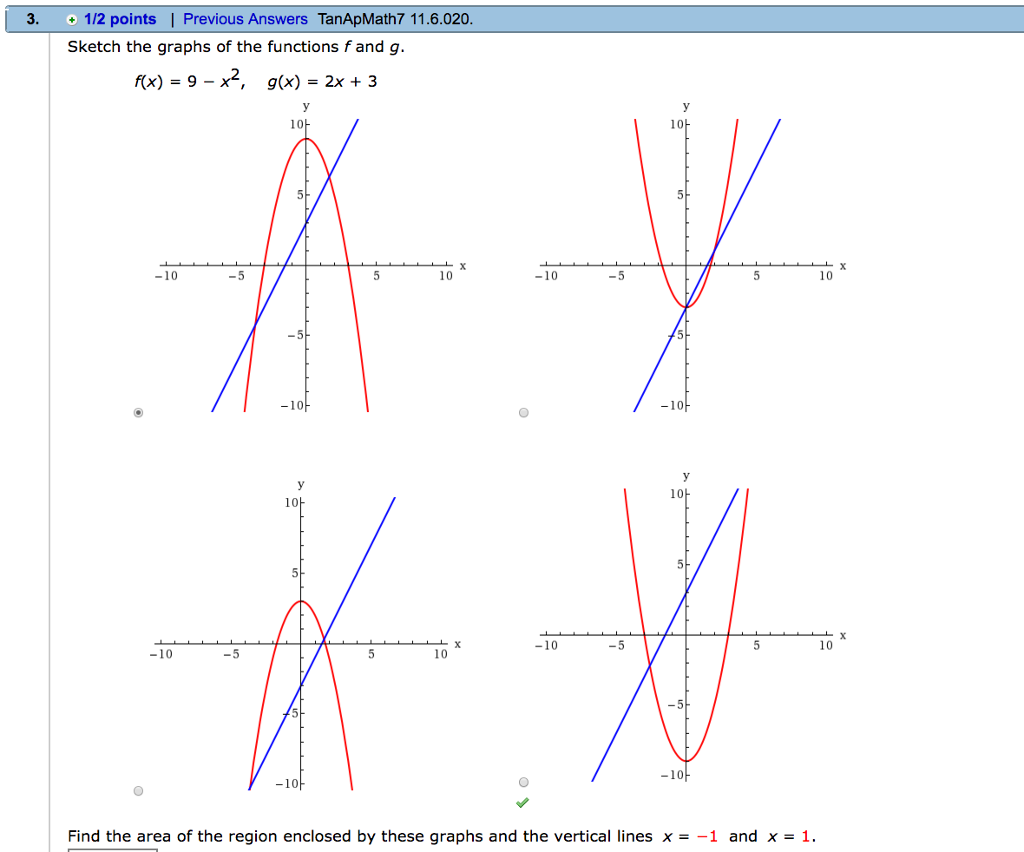



Sketch The Graphs Of The Functions F And G F X 9 Chegg Com
The Algebra of Functions Like terms, functions may be combined by addition, subtraction, multiplication or division Example 1 Given f ( x ) = 2x 1 and g ( x ) = x2 2x – 1 find ( f g ) ( x ) and ( f g ) ( 2 )Apr 10, 18 · Note Enter your answer and show all the steps that you use to solve this problem in the space provided f ( x ) = 9 x 3 2 x 2 − 5 x 4 and g ( x ) = 5 x 3 − 7 x 4 what is f ( x ) − g ( x ) ?Click card to see definition 👆 Tap card to see definition 👆 (infinity, 2) Click again to see term 👆 Tap again to see term 👆 which expression is equivalent to (fg) (4) Click card to see definition 👆




Let F X 9x 2 7 And G X X 2 A Find The Composite Function F Of G X And Simplify Brainly Com




Modul 3 Quadratic Function
Apr 05, 17 · Since f(x) is a difference of two squares (x^2 is a squared term and 81 is a squared term), we can rewrite it as (x 9)(x 9) Now, this will help us when we multiply through by g(x) Let's discuss the solution to g(x) In exponent laws, any number to the power of a negative number will be reciprocated That is, the function will turn into fractional notation Example Rewrite x^1G(x) → "g of x" → "operation(s), g, applied to a given quantity or value , x" "g(x) = x1" tells you to simply subtract 1 from whatever xvalue is given g(5)= 5–1=4 g(6)= 6–1=5 g(9)= 9–1=8 g(x)=x1 f(x) → "f of x" → "operations, f, applied to a gF(x)=x 2 2x−6 g(x)=x 4 3 3 jbouyer Feb 13, 18




Function Mathematics Wikipedia
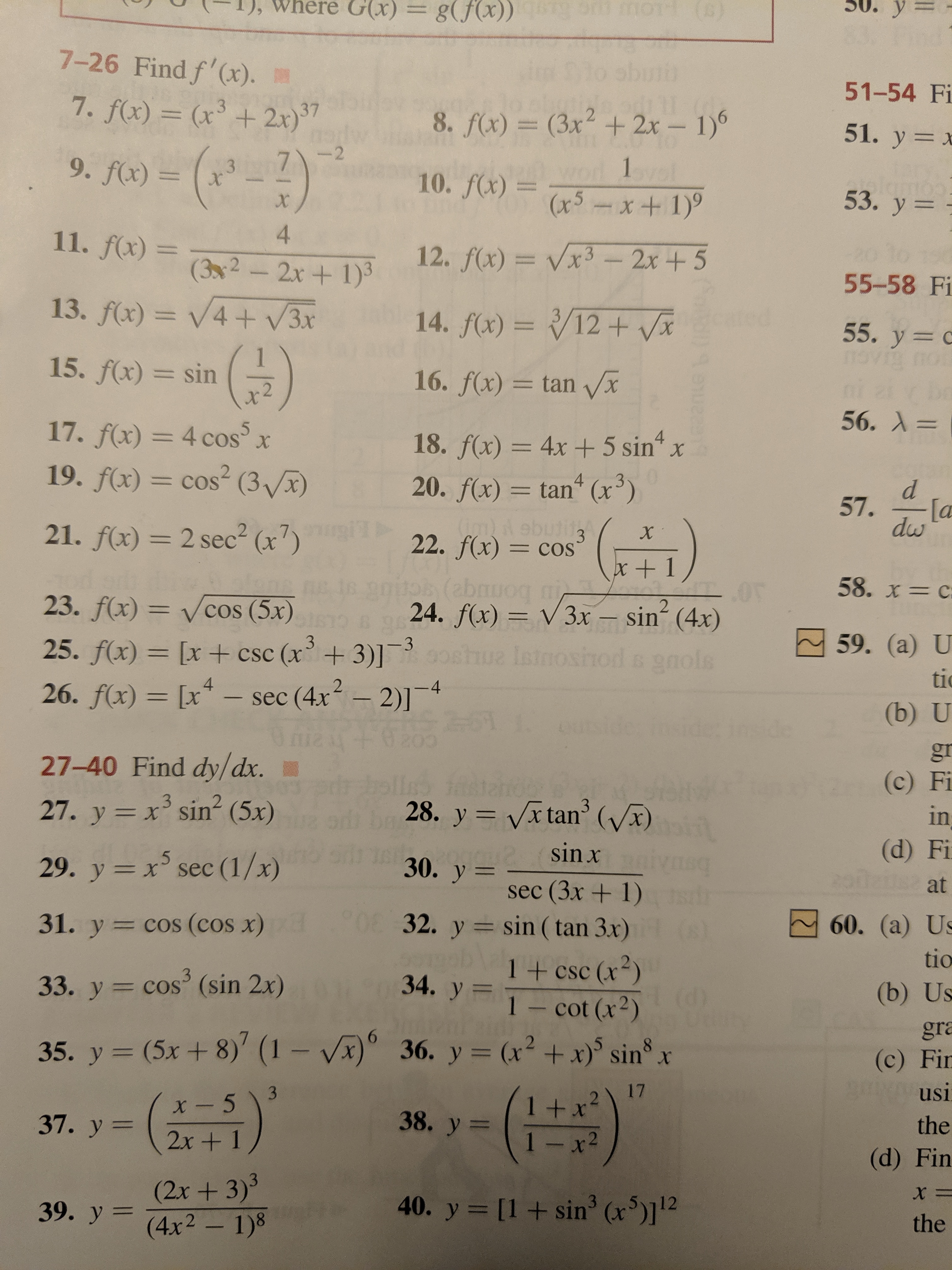



Answered G X U G Fx 00 O 7 26 Find F X Bartleby
Graph f(x)=(x1)^29 Find the properties of the given parabola Tap for more steps Use the vertex form, , to determine the values of , , and Since the value of is positive, the parabola opens up Opens Up Find the vertex Find , the distance from the vertex to the focus Tap for more stepsThen my answer is ( f g ) (2) = 10, ( h – g ) (2) = –9, ( f × h ) (2) = –12, ( h / g ) (2) = –05 If you work symbolically first, and plug in the x value only at the end, you'll still get the same results Either way will work Evaluating first is usually easier, but the choice is up to youShow all of your steps Math Note Enter your answer and show all the steps that you use to solve this problem in the space provided




Solved If F X X And G X 1 Then F G X What Is Chegg Com




If Function F And G Given By F X Log X 1 Log X 2 And G X Log X 1 X 2 Are Equal Youtube
Jun 21, 19 · Suppose f(x) = x and g(x) x which statement best compares thegraph of g(x) with the graph of a(x)?Emmonsnoah351 is waiting for your help Add your answer and earn points(b) What Is The Domain Of F(x)?
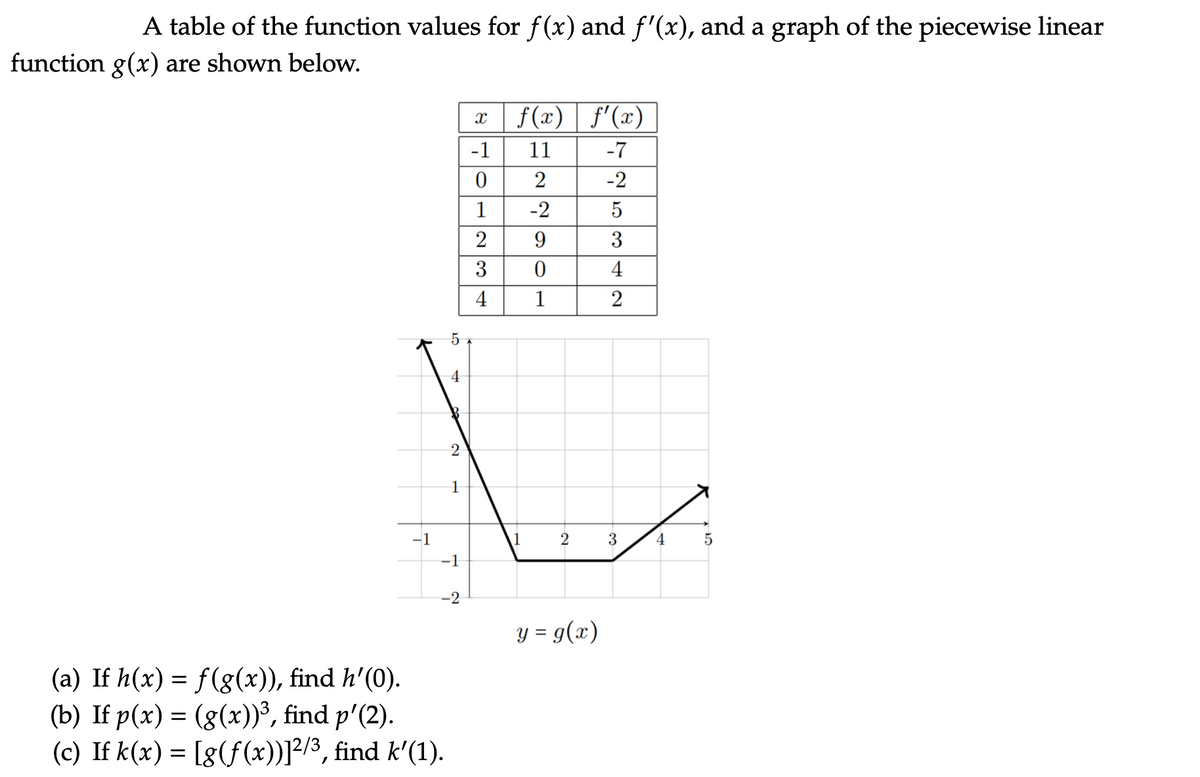



Answered A Table Of The Function Values For F X Bartleby
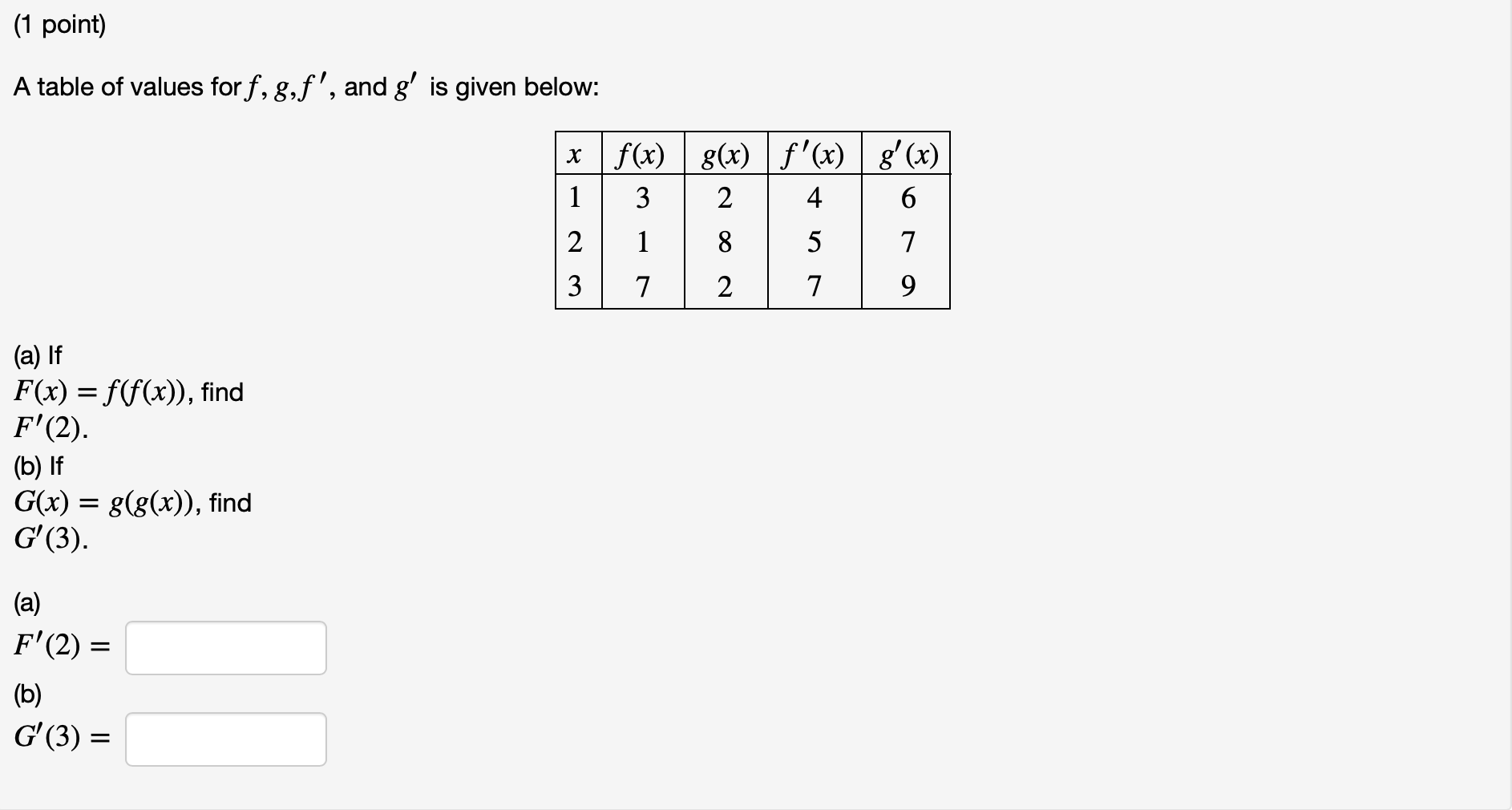



1 Point A Table Of Values For F G F And G Is Chegg Com
The graph of the function f(x) = (x 2)(x − 4) is shown Which describes all of the values for which the graph is negative and increasing?Given f(x) = 2x 3 and g(x) = –x 2 5, find (g o f)(1) When I work with function composition, I usually convert "(f o g)(x)" to the more intuitive " f (g(x))" form This is not required, but I certainly find it helpful In this case, I get (g o f)(1) = g(f(1))You can put this solution on YOUR website!
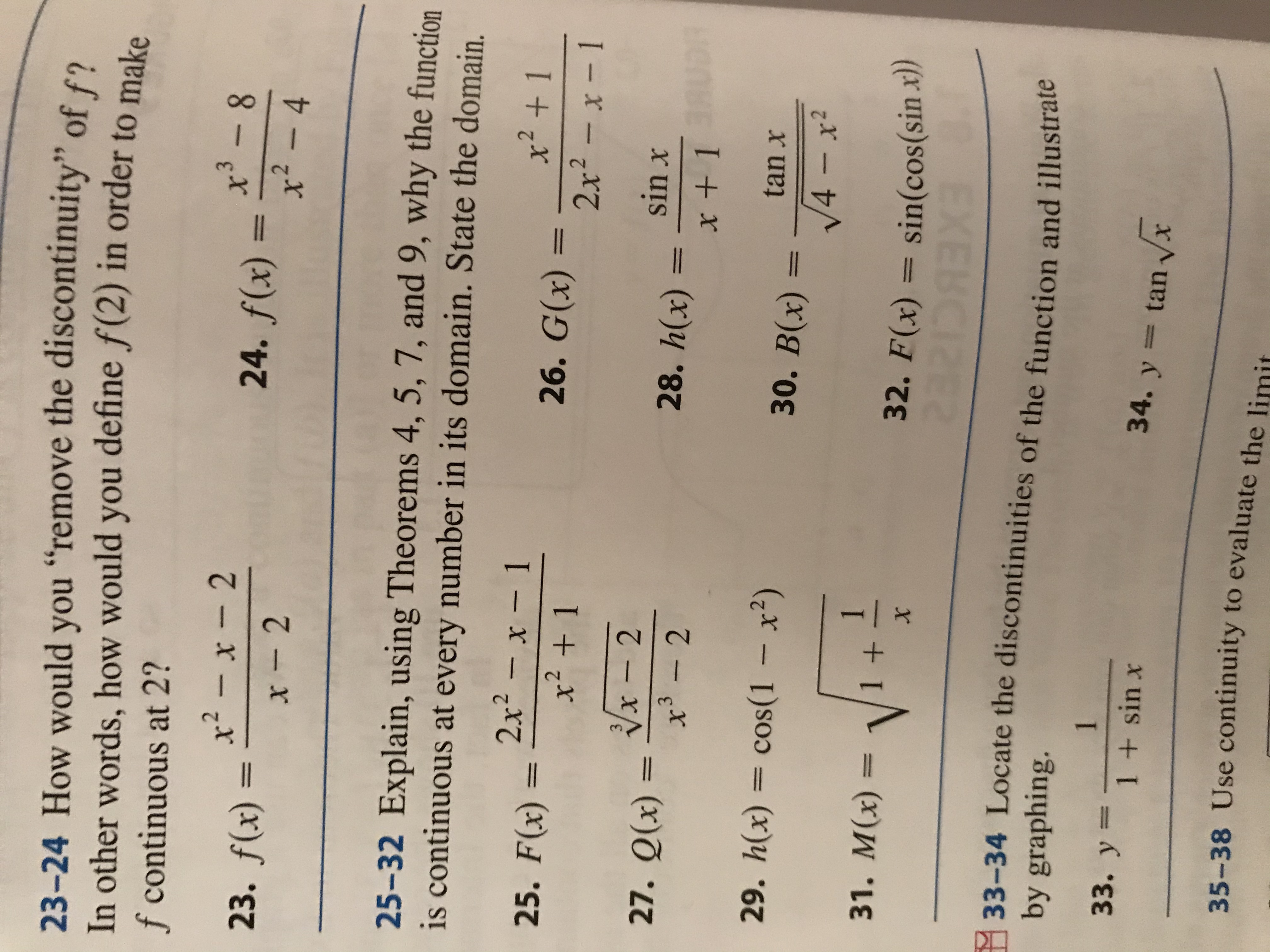



Answered 23 24 How Would You Remove The Bartleby




Lab 5 Lab Solution Warning Decodescan Unexpected Mcu Data Current Marker Is Studocu
5)Given that q(x)=2x^3x^23x−15, find (q−1)′(−9) using the Inverse Function Theorem Note that q(1)=−9Solve your math problems using our free math solver with stepbystep solutions Our math solver supports basic math, prealgebra, algebra, trigonometry, calculus and moreAnswer to Given f(x)= 5x 1 and g(x) = 2x2, first find Transcribed image text Given f(x)= 5x 1 and g(x) = 2x2, first find (9,79, 19, and Then determine the domain for each function {fg)(x)=(Simplify your answer) What is the domain offg?




Calameo Matematica




Find Composite Function G O F X Of F And G F 1 3 2 4 3 5 4 6 G 3 6 4 8 5 10 6 12
Feb 11, 17 · The graphs of f(x)=−5/3x9 and g(x)=2^x−1 intersect at (3, 4) What is the solution of −5/3x9=2^x−1 ?To play this quiz, please finish editing itYes, in 1950 Hellmuth Kneser solved g (g (x)) = e^x on the entire real line with g real analytic You can use the inverse of his solution Cannot imagine there is unicity




Downloaded From Equations 2 4 The Reciprocal Function X 1 X Pdf Free Download




Let F X X 2and G X 2x 1be Two Real Functions Find
Answer is g f (x) = 3 2 x 1 x Explanation f (x) = 1 x g (x) = x 2 1 3 x 2 Let f(x) = \\frac{x^2}{x^2 1}find the largest integer n so that f(2) \\cdot f(3) \\cdot f(4) \\cdots f(n1) \\cdot f(n) < 1Mar 30, 18 · 1 What is (f−g)(x)?Get stepbystep solutions from expert tutors as fast as 1530 minutes Your first 5 questions are on us!
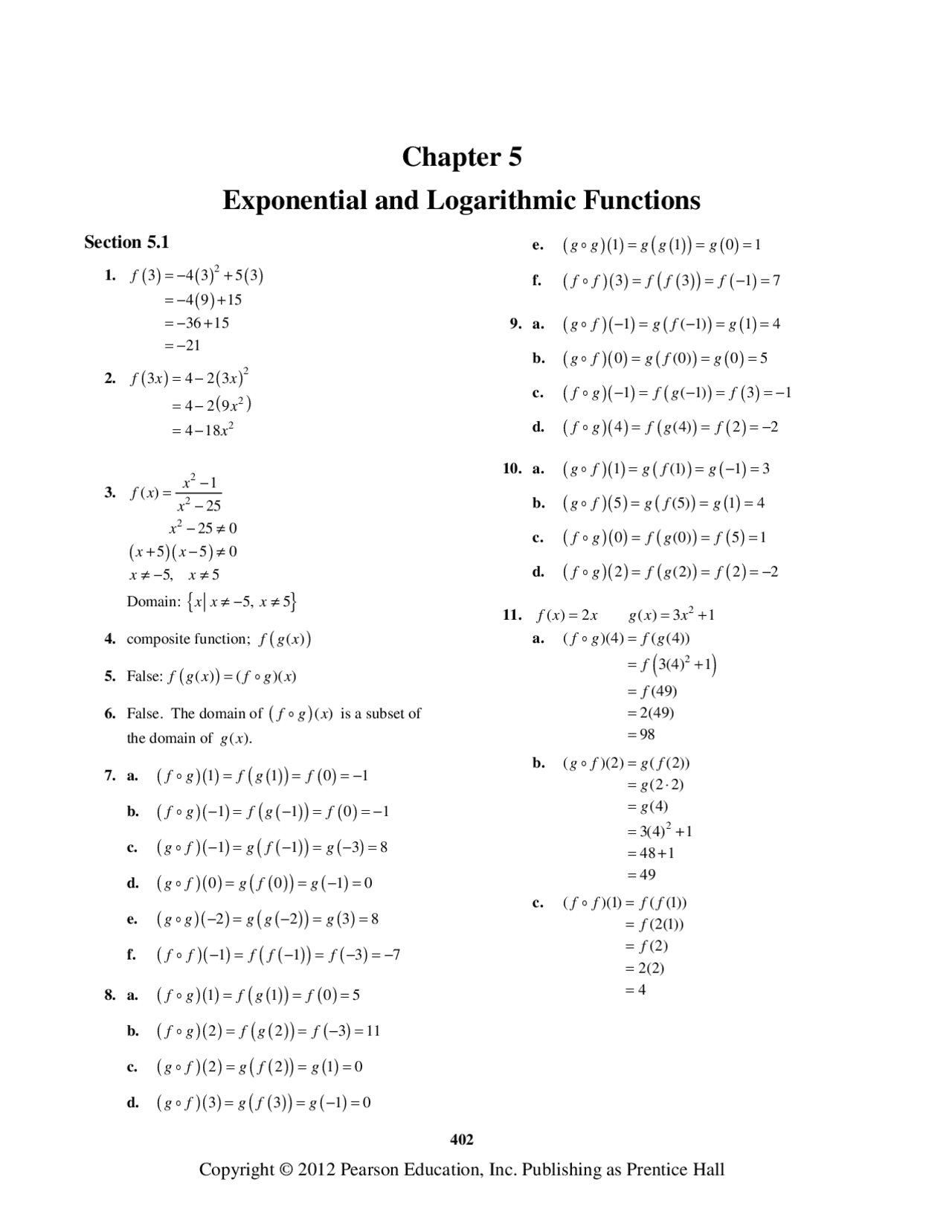



Solucionario Sullivan Docsity
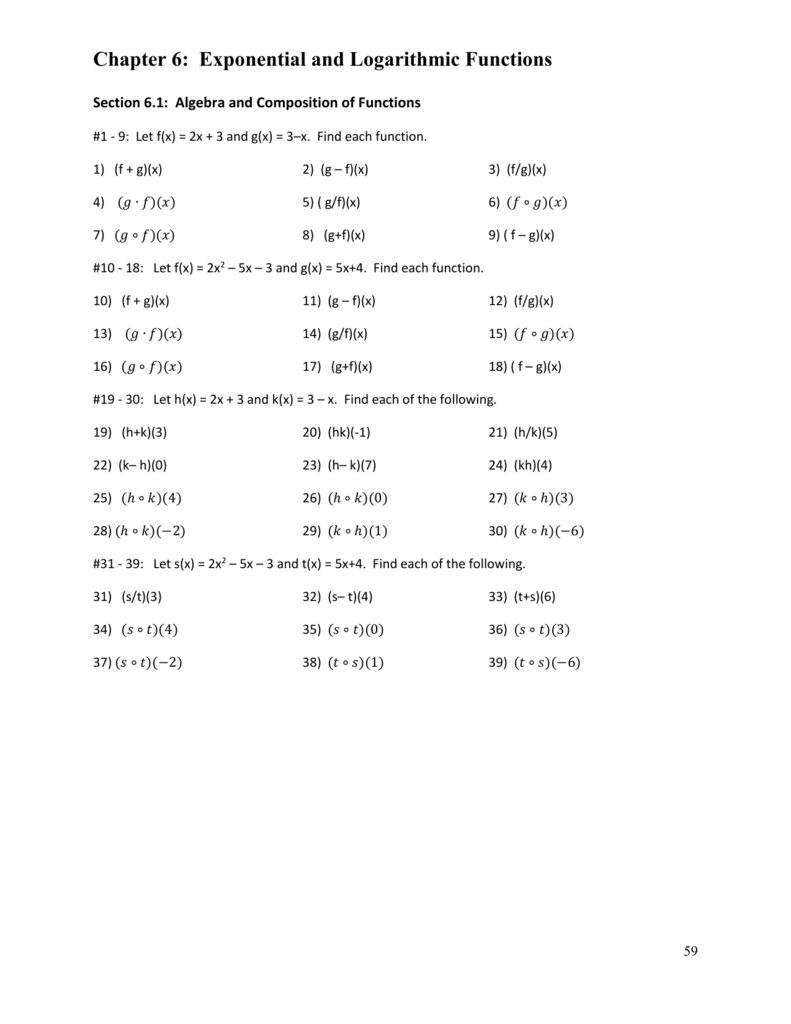



Chapter 6 Problems
Find f(g(x)) f(x)=x^29 , g(x)=3x, Set up the composite result function Evaluate by substituting in the value of into Simplify each term Tap for more steps Rewrite as Expand using the FOIL Method Tap for more steps Apply the distributive property Apply the distributive propertyFind the Properties f (x)=x^24x9 f (x) = x2 4x − 9 f ( x) = x 2 4 x 9 Rewrite the equation in vertex form Tap for more steps Complete the square for x 2 4 x − 9 x 2 4 x 9 Tap for more steps Use the form a x 2 b x c a x 2 b x c, to find the values of a a, b b, and c c a = 1, b = 4, c = − 9 a = 1, b = 4, cAll real values of x where x < −2 all real values of x where −2 < x < 4 all real values of x where 1 < x < 4 all real values of x where x < 0




Math Journal 9 11 Find The Value Of The Function Ppt Video Online Download




Ppt 9 4 Powerpoint Presentation Free Download Id
Oct 19, · F(x) = x2 What is g(x)?Thus, f first translates x into I, if it is outside I, and otherwise, untranslates and computes g, if it is in I It follows that f (f (x)) = g (x) for all x outside I There are 2 R many such h's, and hence also this many f'sQED If g is continuous, then this f can be chosen also to be continuousQuestion 9 Let F() = X2 – 1 And Let G(x) = V2 (a) What Is The Domain Of G(x)?




Rd Sharma Solutions For Class 12 Maths Chapter 2 Function Download Free Pdf




F X X 2 What Is G X G X Brainly Com
Solve your math problems using our free math solver with stepbystep solutions Our math solver supports basic math, prealgebra, algebra, trigonometry, calculus and moreFree math problem solver answers your algebra, geometry, trigonometry, calculus, and statistics homework questions with stepbystep explanations, just like a math tutorAug 02, 17 · We substitute g(x) = x2 2x − 8 on the right side but we write (f (x)) everywhere that there is an x (gof)(x) = (f (x))2 2(f (x)) − 8 Substitute x − 1 for f (x) (gof)(x) = (x − 1)2 2(x − 1) − 8 Expand the square (gof)(x) = x2 − 2x 1 2(x −1) − 8 Use the distributive property (gof)(x) = x2 − 2x 1 2x −2 −8




Name Id Discussion Section Pdf Free Download



How Do You Find The Area Between F X X 2 2x 1 G X 3x 3 Socratic
If f(x) = 3x 9 and g(x) = x^2, what is (g บ f)(5)?gf(x) = g3x9 = (3x9)^2 = 9x^2 54x 81Cheers,Proof of f(x) g(x) = f(x) g(x) from the definition We can use the definition of the derivativeIf f(x)=−cos(x) and g(x)=4x^22x−3, what is h′(x)?




Answered 7 8 Graph G X F X 2 Graph G X Bartleby




If F X X 2 2 And G X 4f X 1 Then Which Of The Following Is The Value Of G 3 Wyzant Ask An Expert
O A (00, 101 100) OB 1000) Oc (1,00) OD (00,00) (fg)(x) = (simplify your answer)Free math problem solver answers your algebra, geometry, trigonometry, calculus, and statistics homework questions with stepbystep explanations, just like a math tutor2 f(x)= 8x^2 g(x)=1/x^2 I'm having trouble understanding what i have to do, please help This question is from textbook Algebra2 Answer by jim_thompson5910() (Show Source) You can put this solution on YOUR website!
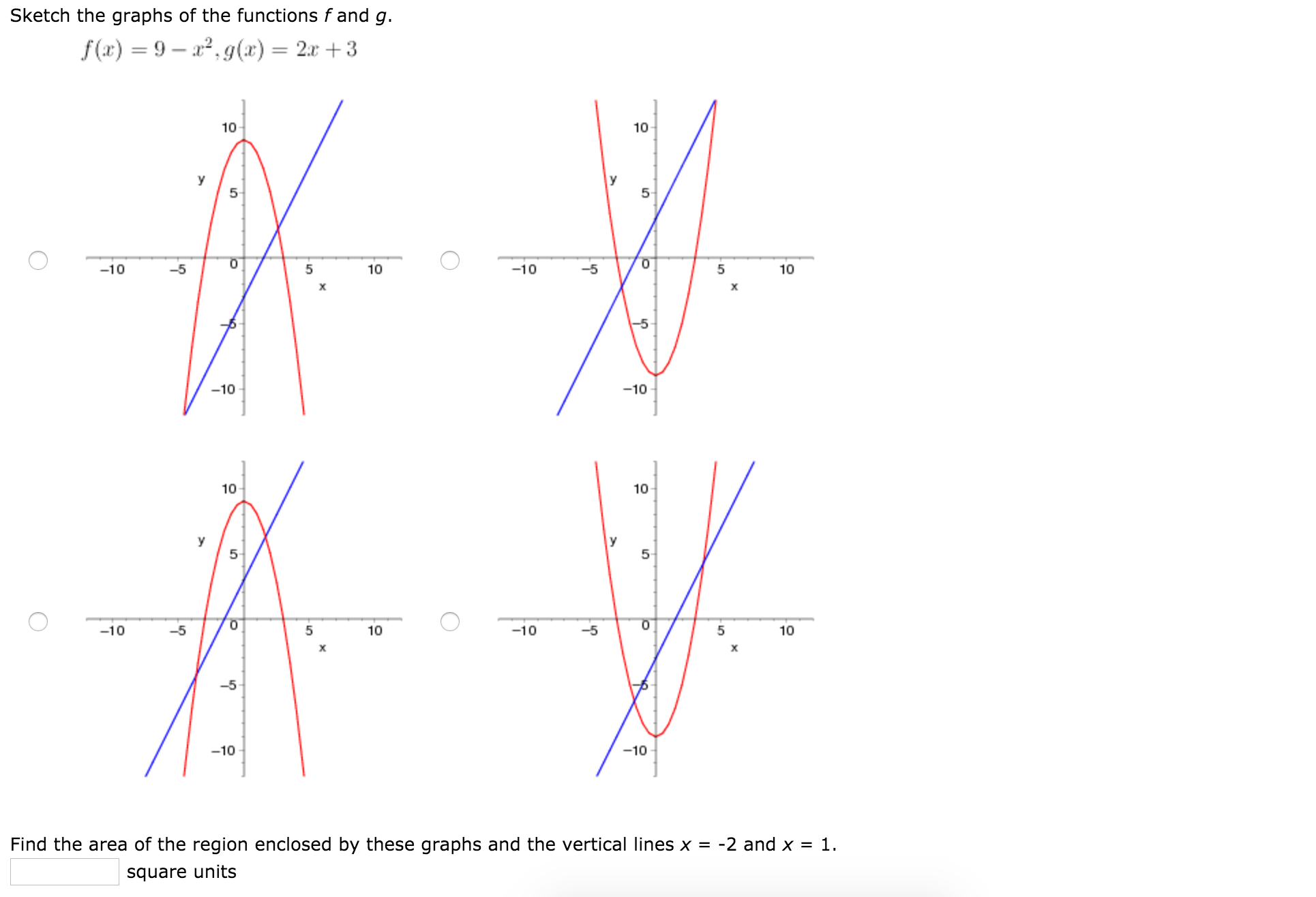



Sketch The Graphs Of The Functions F And G F X 9 Chegg Com
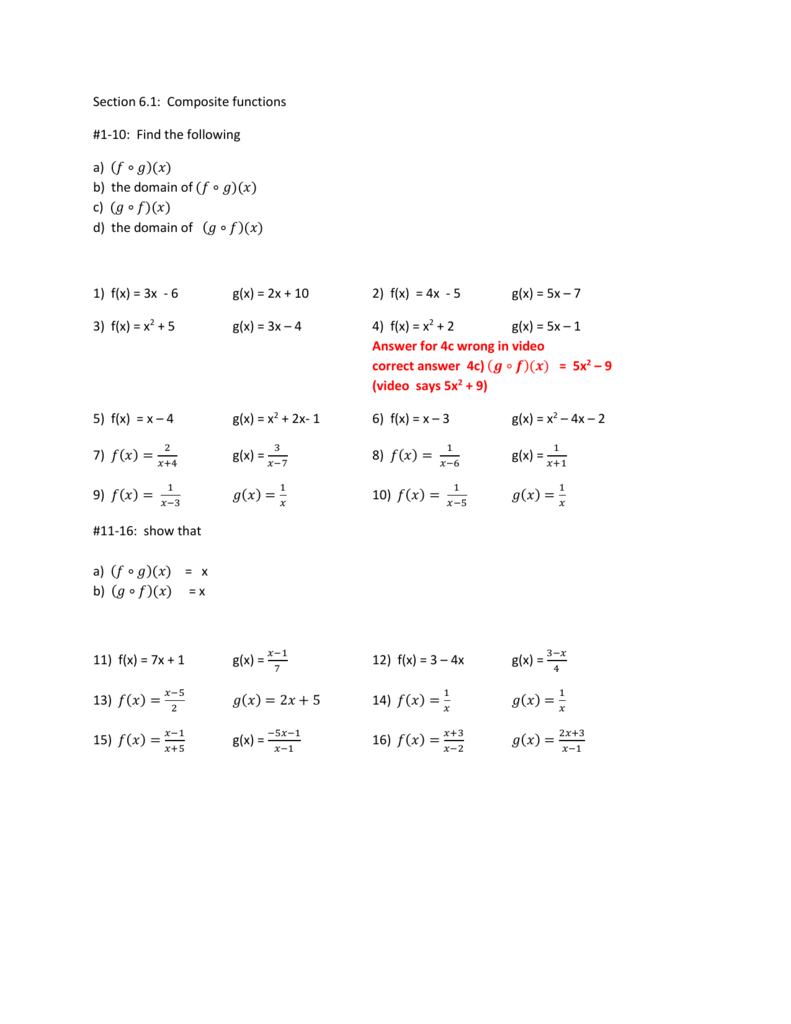



Chapter 6 Problems
F(x)=x^4−x^29 g(x)=x^33x^212 (f−g)(x)= 2 What is (f⋅g)(x)?Enter your answer in the boxPlay this game to review Algebra II Given f(x)=2x25, find f(5) This quiz is incomplete!




Use The Graph That Shows The Solution F X G X F X 3 4x 2 3x 1 G X 2 X What Is The Brainly Com
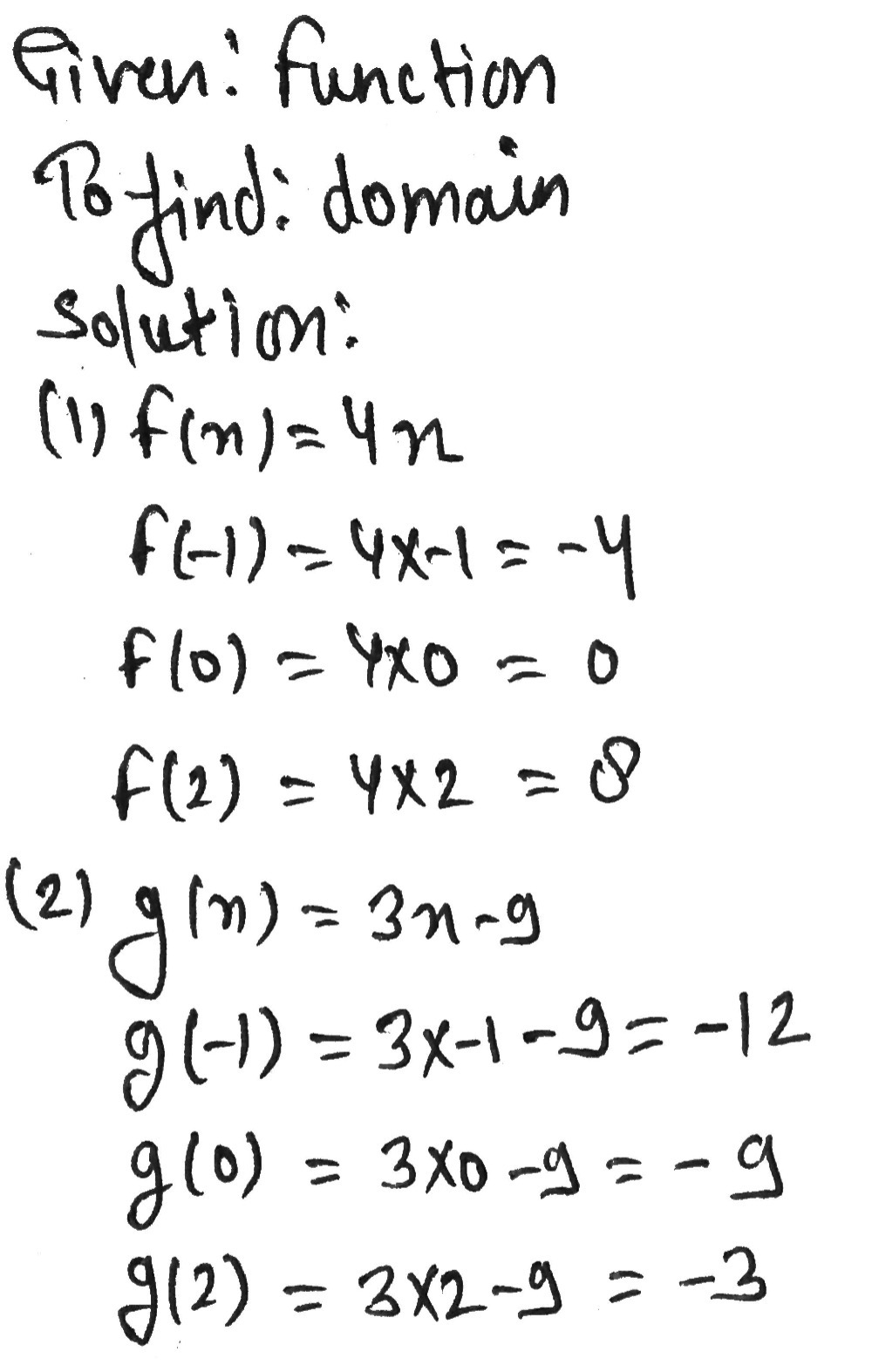



Evaluate The Function Over The Domain Given X 1 Gauthmath
O a the graph of g(x) is the graph of ax) shiftedunits leftob the graph of g(x) is the graph of fx) vertically stretched by afactor of 5oc the graph of d(x) is the graph of a(x) horizontally stretched by afactor of 5od the graph of g() is the graph of f(x) horizontally(c) What Is The Domain Of (gof)(x)?Find (f g)(x) for f and g below f(x) = 3x 4 (6) g(x) = x2 1 x (7) When composing functions we always read from right to left So, rst, we will plug x into g (which is already done) and then g into f What this means, is that wherever we see an x in f we will plug in g That is, g acts as our new variable and we have f(g(x))




Composite Function Exam Questions Examples Solutions Worksheets Videos Activities




What Is G X Brainly
This property can be shown to hold for the function f(x) = b x Because f takes arbitrarily large and arbitrarily small positive values, any number y > 0 lies between f(x 0) and f(x 1) for suitable x 0 and x 1 Hence, the intermediate value theorem ensures that the equation f(x) = y has a solutionExperts are tested by Chegg as specialists in their subject areaCompleting the square, f(x)=\frac{3}{4}(\frac{1}{x}\frac{1}{2})^2, so x=2 is a global minimum, and there is no minimum, absolute or relative, for x\gt 1 Completing the square, f ( x ) = 4 3 ( x 1 2 1 ) 2 , so x = − 2 is a global minimum, and there is no minimum, absolute or relative, for x > − 1




If F X 3x 1 G X X 2 2 Find Fog X And Gof X Youtube
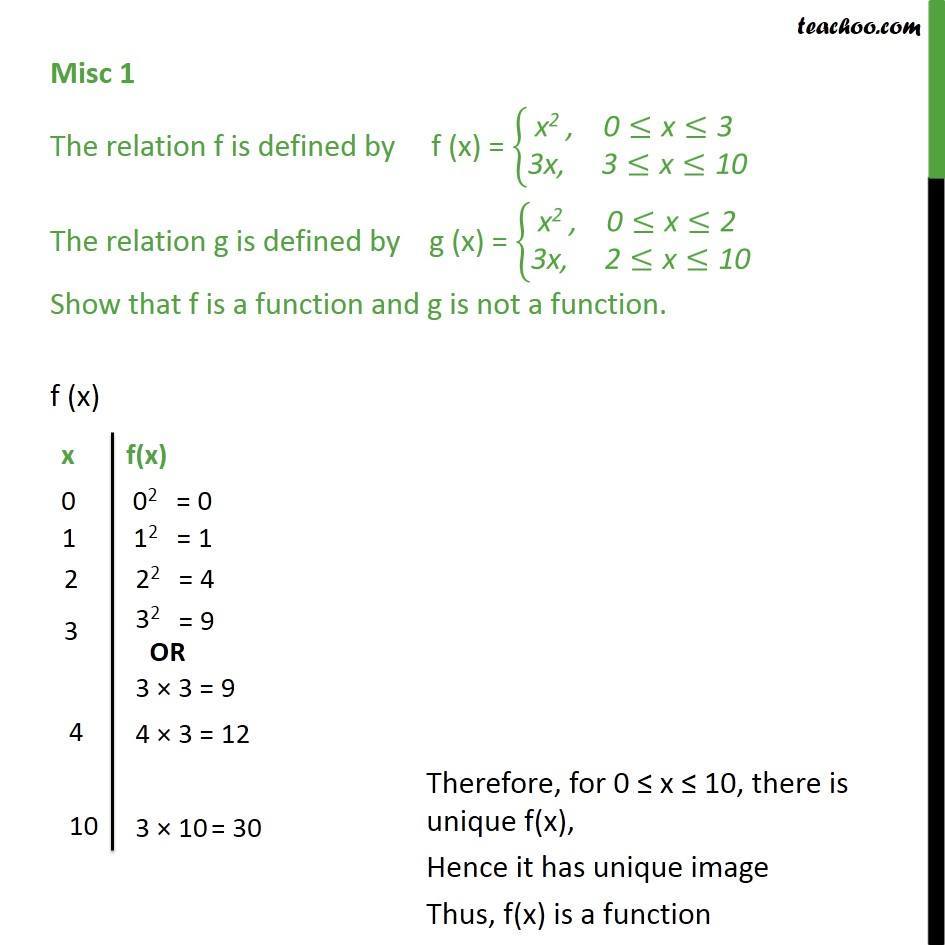



G X 2 F X 2 Zonealarm Results
Jun 27, 18 · x/(9x^2) = sum_(k=0)^oo (1)^k x^(2k1)/3^(2k2) with radius of convergence R=3 Note that x/(9x^2) = x/9 1/(1(x/3)^2) Consider the sum of the geometric seriesIn mathematics, function composition is an operation that takes two functions f and g and produces a function h such that h(x) = g(f(x))In this operation, the function g is applied to the result of applying the function f to xThat is, the functions f X → Y and g Y → Z are composed to yield a function that maps x in X to g(f(x)) in Z Intuitively, if z is a function of y, and y is aAnswer to 9 f (x, y) = x – 2y, g(x, y) = x2 y2 – 1 = 0 10 Who are the experts?
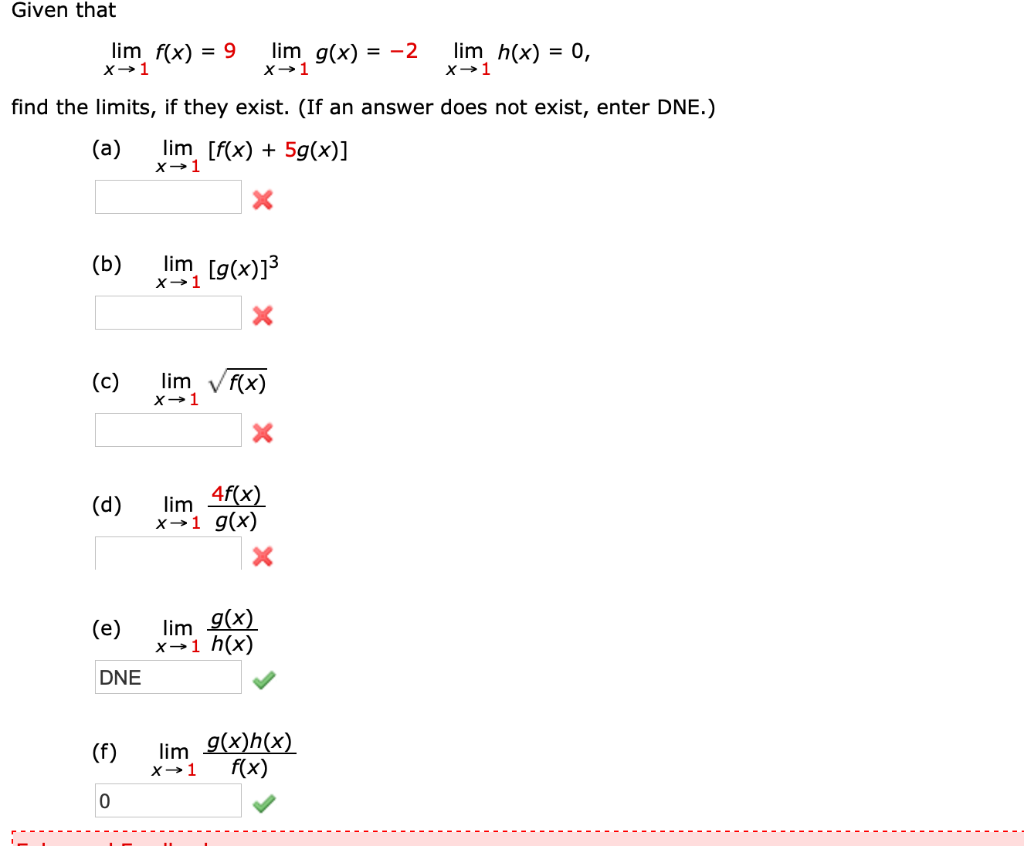



Solved Given That Lim F X 9 Lim G X 2 Lim H X 0 Chegg Com




Writing Exponential Functions From Graphs Algebra Video Khan Academy
May 12, 16 · Explanation The problem with this type of question is often the confusion that results from two different uses of x If instead we write XXXf (w) = w2 −w then there is less difficulty in replacing w with g(x) XXXf (g(x)) = g(x)2 − g(x) and then replacing g(x) with 3x 1 XXXf (g(x)) = (3x 1)2 − (3x 1)We take the old exponents and subtract one, so it's gonna give us a negative three, which means that we end up getting negative two x to the negative three Now, another thing is we want to evaluate it at a so f prime of a is just going to be a negative to a to the negative three And this will be our final answer for this problem Add To PlaylistF(x)=x4−9 g(x)=x39 (f⋅g)(x)= Thanks so much!




F X X 2 What Is G X Brainly Com
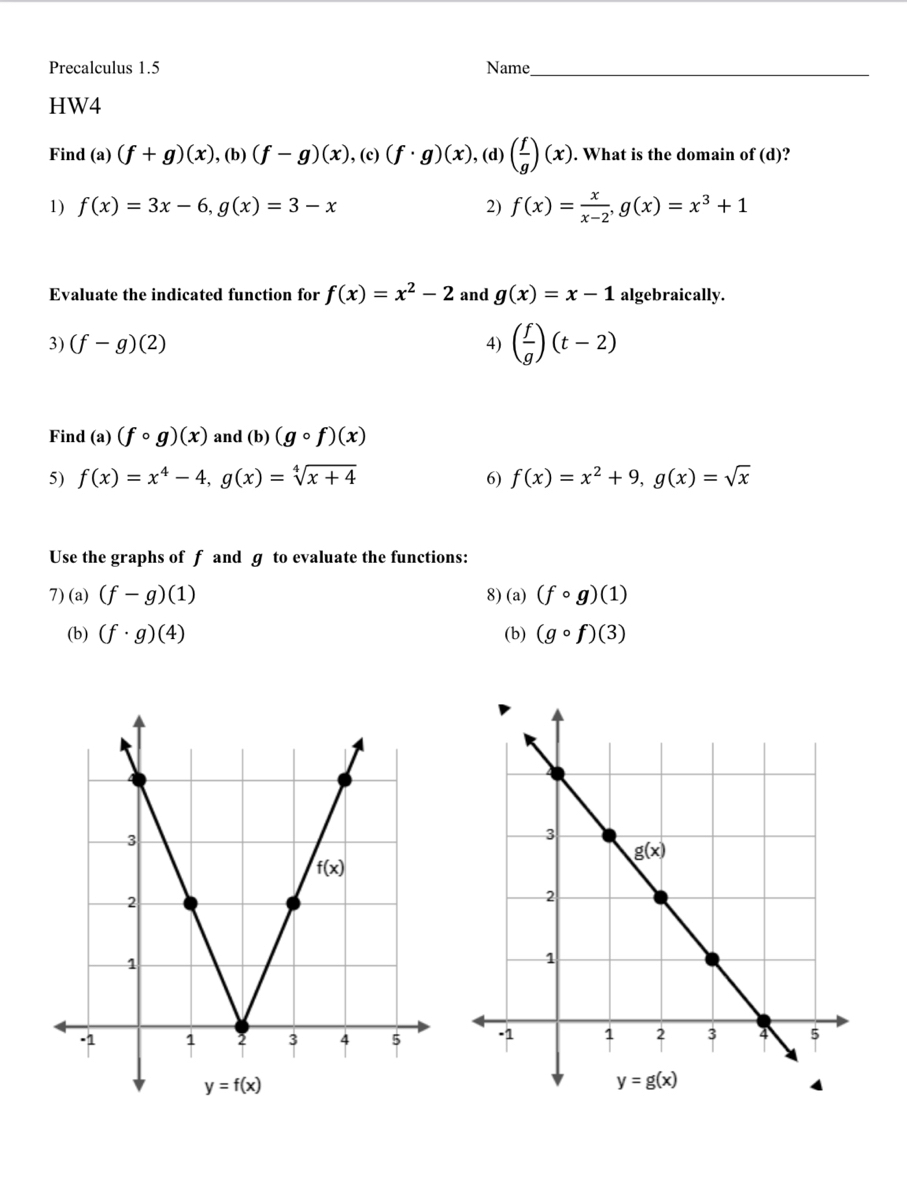



Answered Evaluate The Indicated Function For Bartleby




Lesson 1 1 Pages 5 11 State The Domain And Range Of Each Relation Then State Whether The Relation Is A Function Write Yes Or No Pdf Free Download




Unit 17 More Algebra Mathematics 9 1 Igcse Year Ppt Download
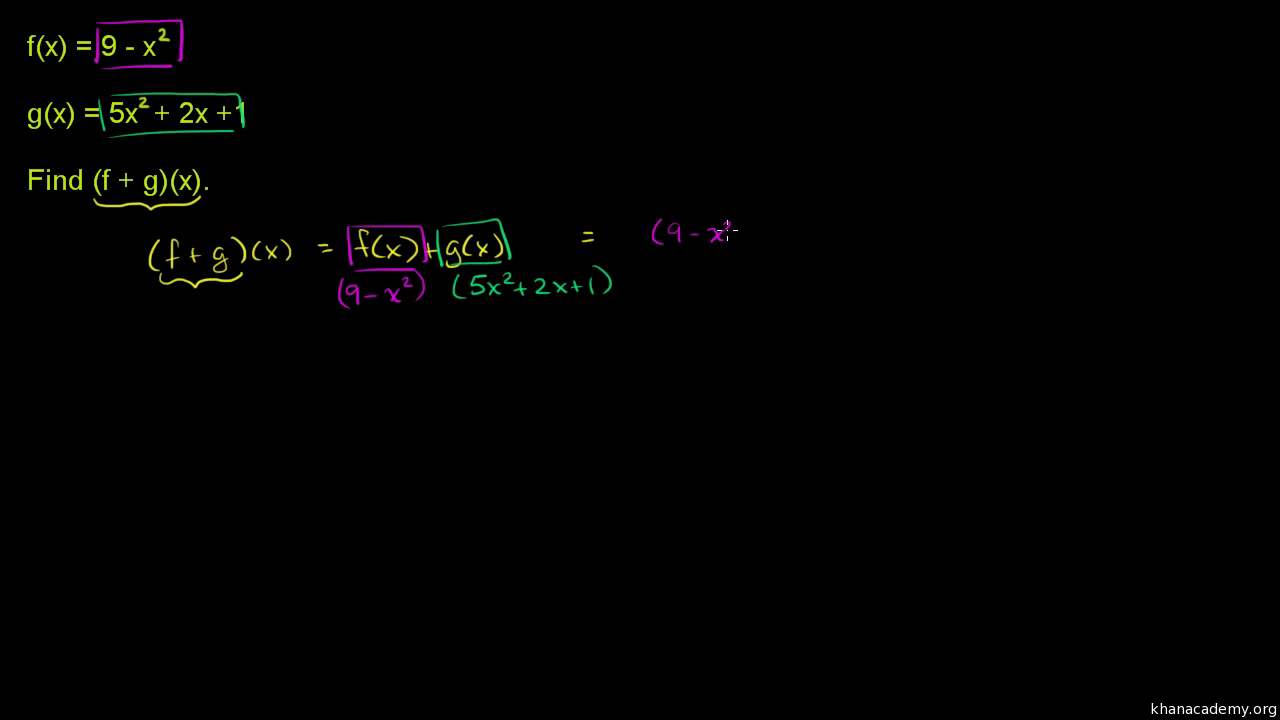



Adding Functions Video Functions Khan Academy



15f X Dfracx1x2g X Dfracx 12x See How To Solve It At Qanda




Ex 2 Graph Two Translations Of The Basic Rational Function F X 1 X Math Help From Arithmetic Through Calculus And Beyond




Let F G Be Two Real Functions Defined By F X X 1 And G X 9 X 2 Then Described Each Of The Following Functions F G
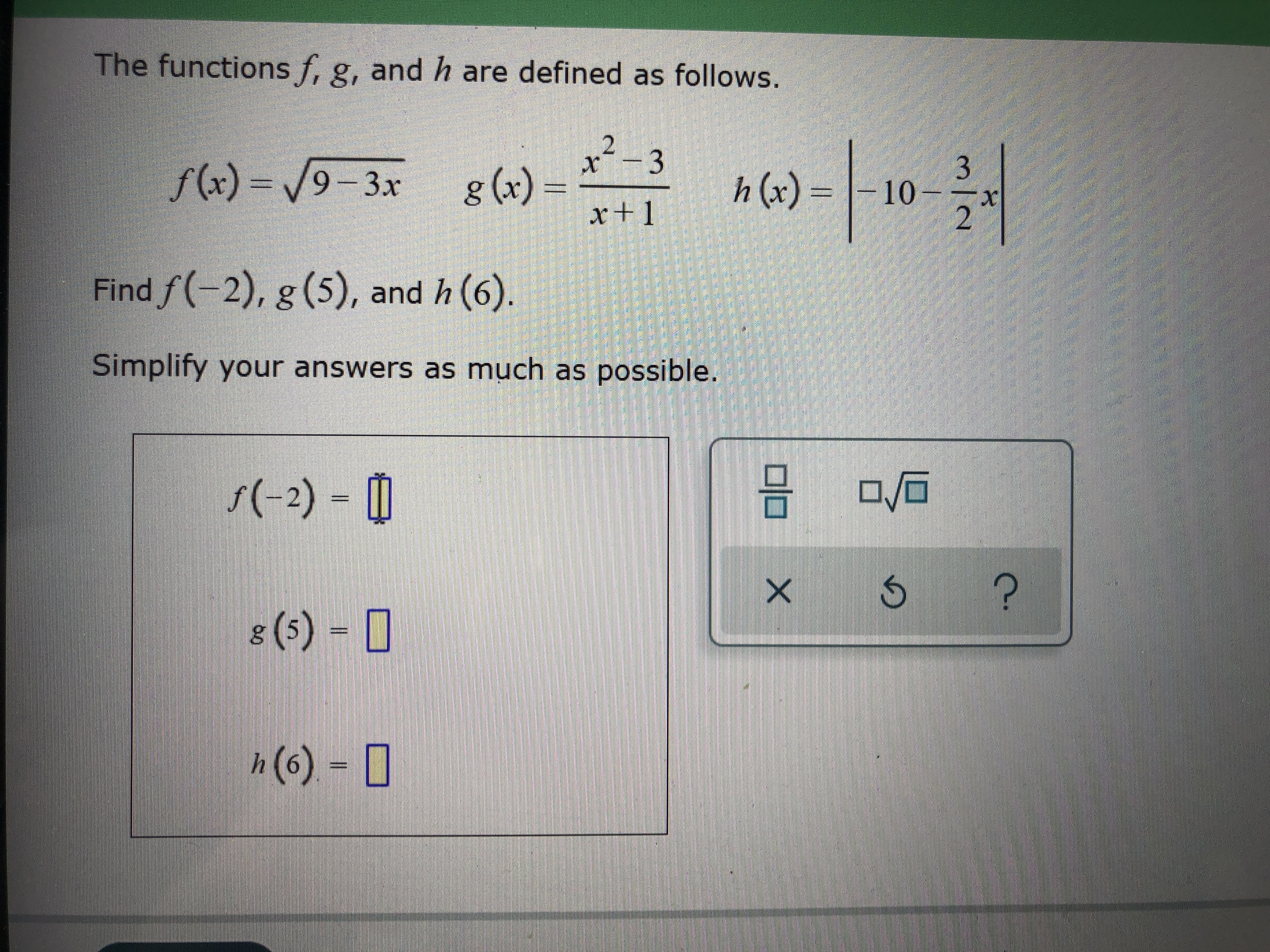



Answered The Functions F G And H Are Defined Bartleby




If G X Frac 12 Frac 19 X 2 4 2 Is Obtained By Doing G X F Kx Horizontal Stretch Of Function F What Is Number K Mathematics Stack Exchange
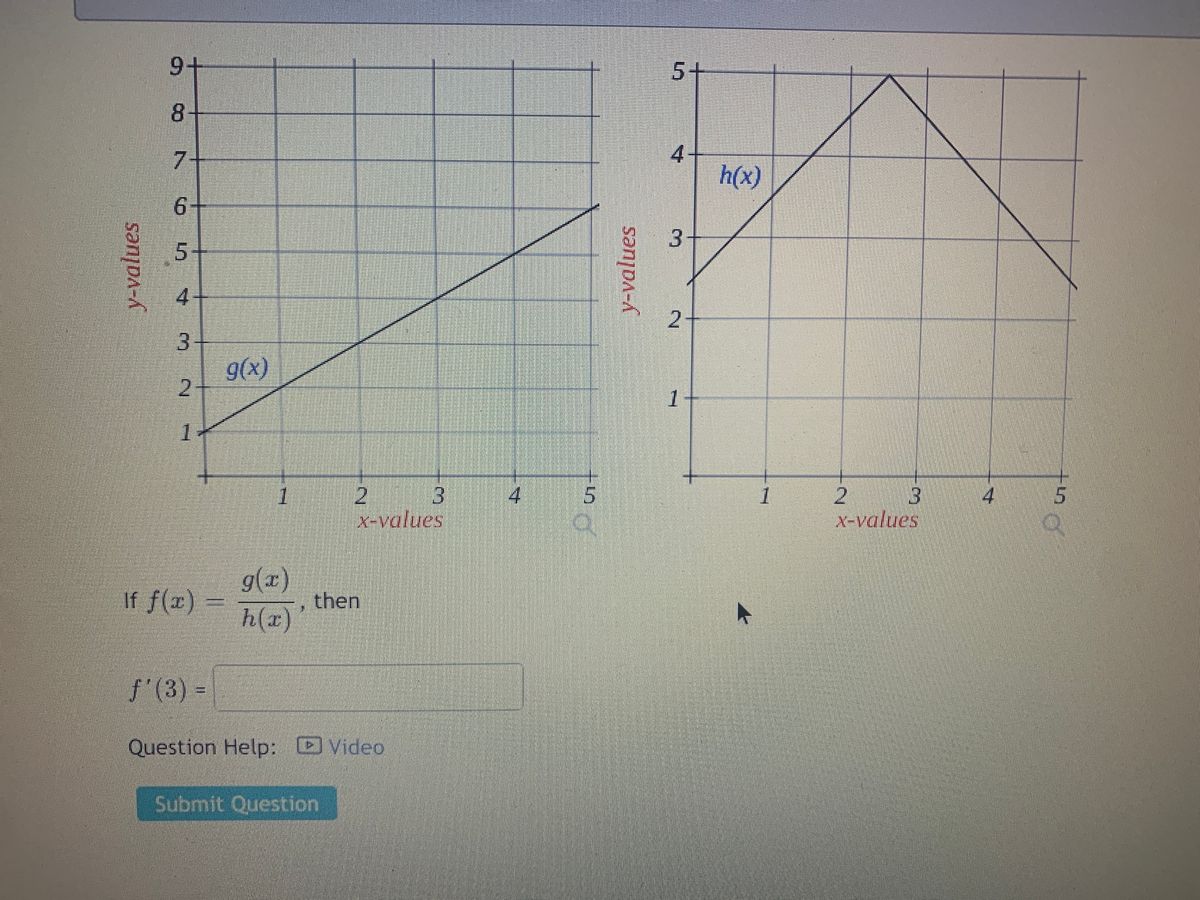



Answered 9 5 8 7 H X 6 4 3 9 X 1 1 2 3 Bartleby
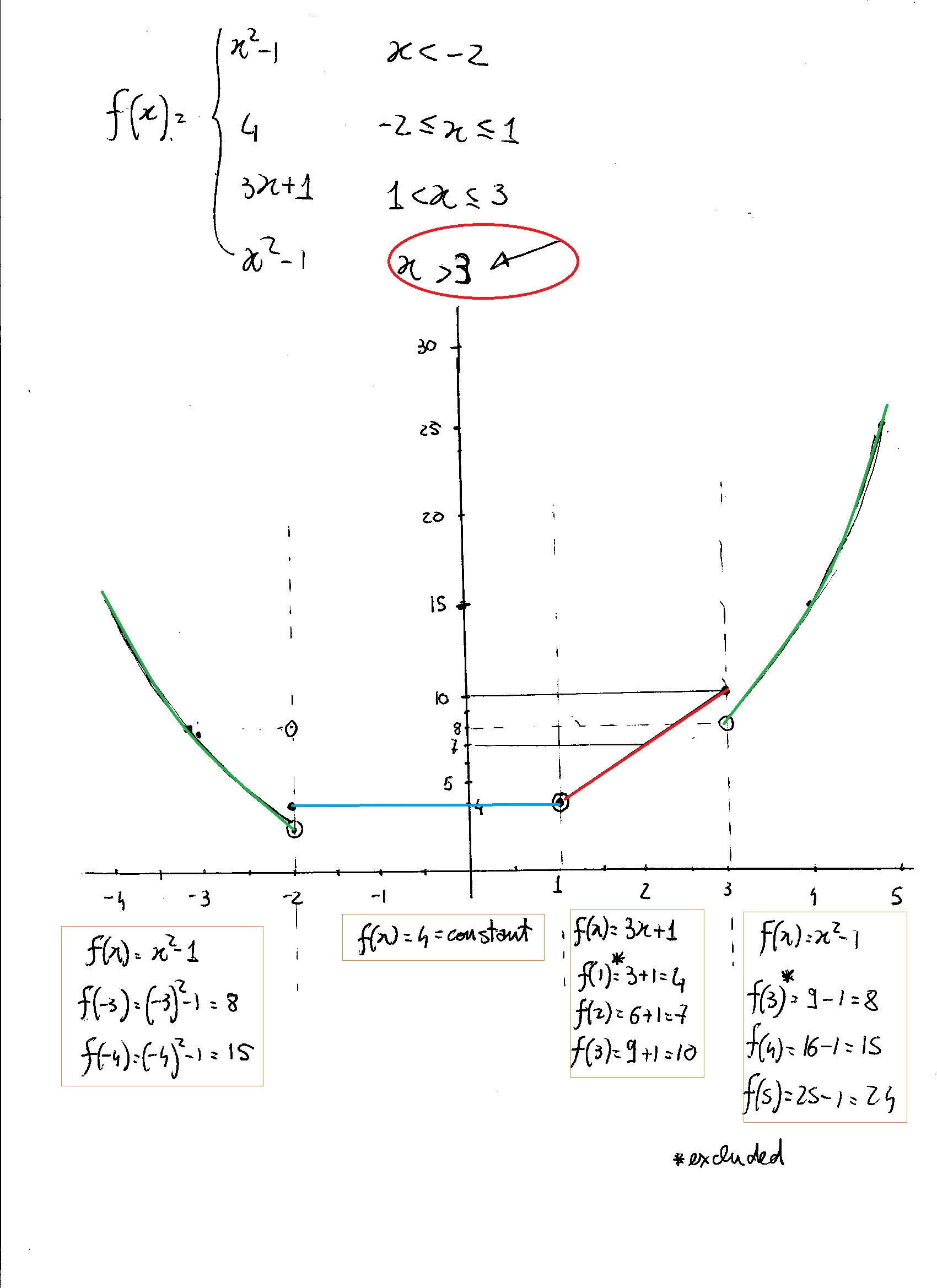



How Would You Graph F X If F X X 2 1 X 2 4 2 X 1 3x 1 1 X 3 X 2 1 X 1 How Would You Evaluate The Function At The Indicated Points F 3 F 2 F 5 F 3 Socratic
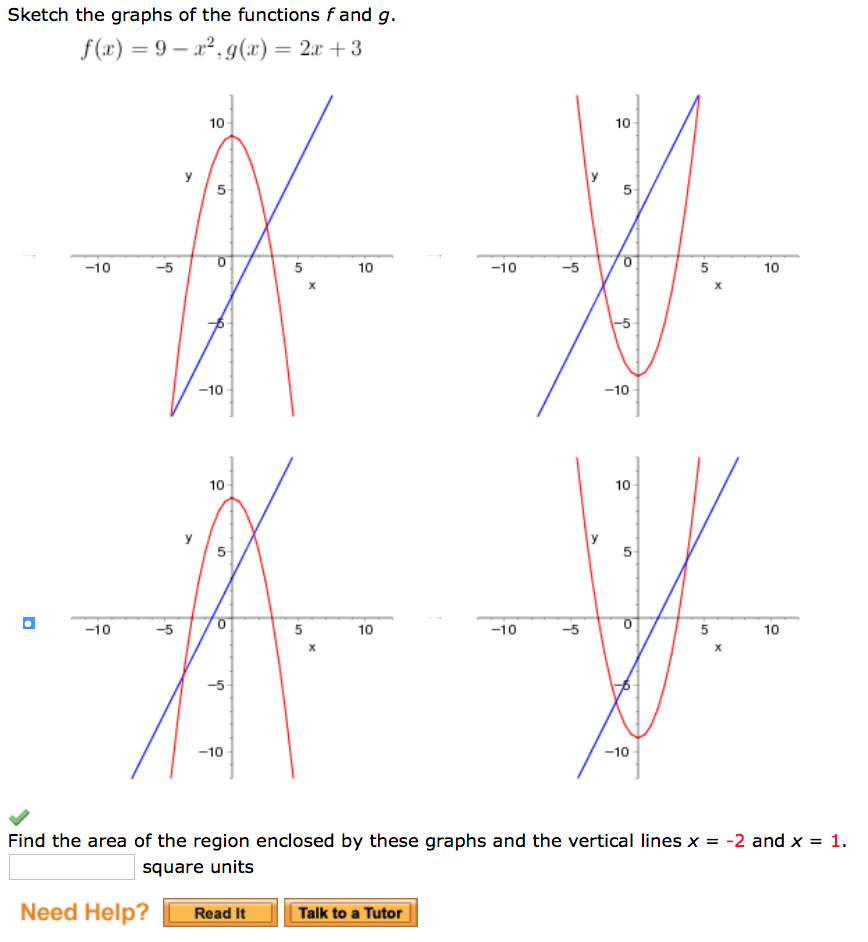



Sketch The Graphs Of The Functions F And G F X 9 Chegg Com




Practice Test 6 Answers Pdf Teaching Mathematics Mathematical Analysis
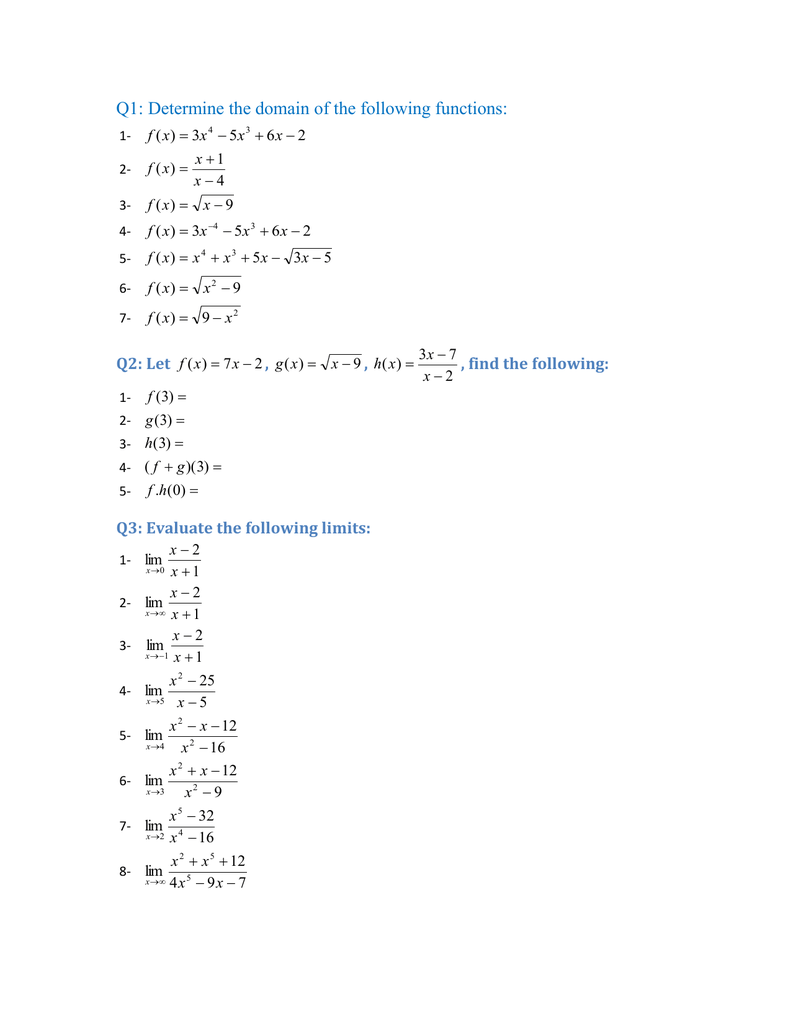



اسئلة محلولة عن الدوال والنهايات
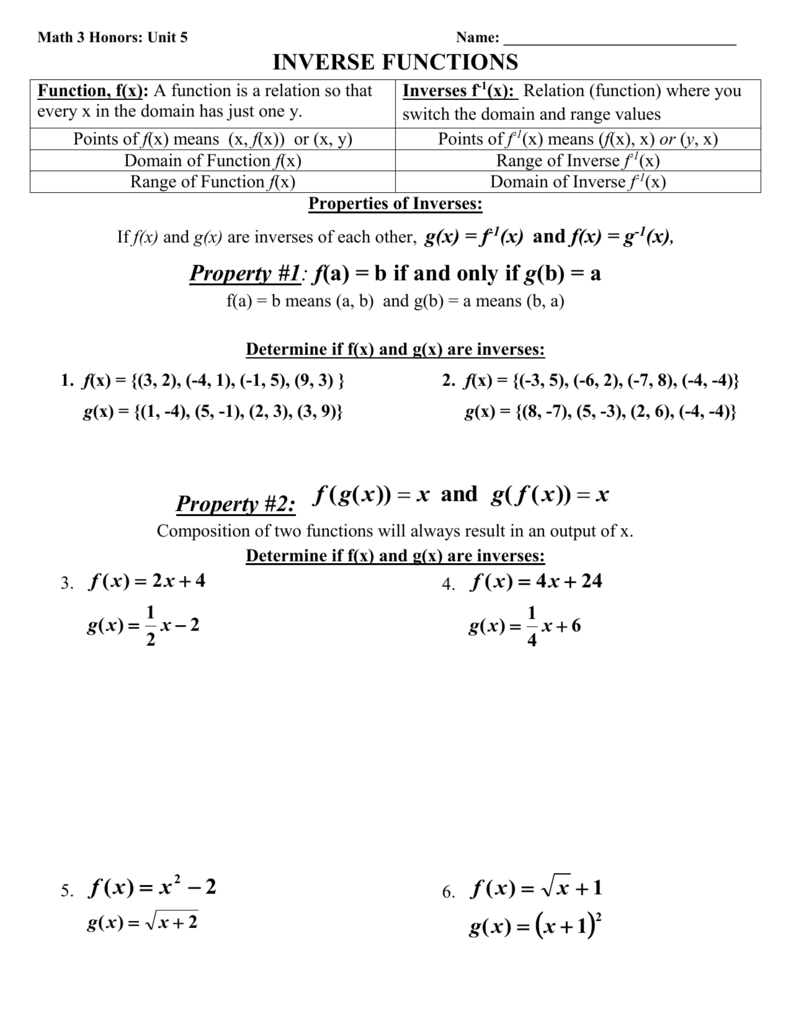



Are Inverses F X




Rd Sharma Solutions For Class 12 Maths Chapter 2 Function Download Free Pdf




Maths Summing Series Homeworkhelp




Compound Functions Edexcel Igcse Maths Revision Notes




The Graph Of F X X 2 Is Shown Use The Parabola Tool To Graph G X 9 X 1 X 2 2graph The Brainly Com




Function Arithmetic Product F G X And F G 2 Youtube




A 4x3 13x230x 25 See How To Solve It At Qanda
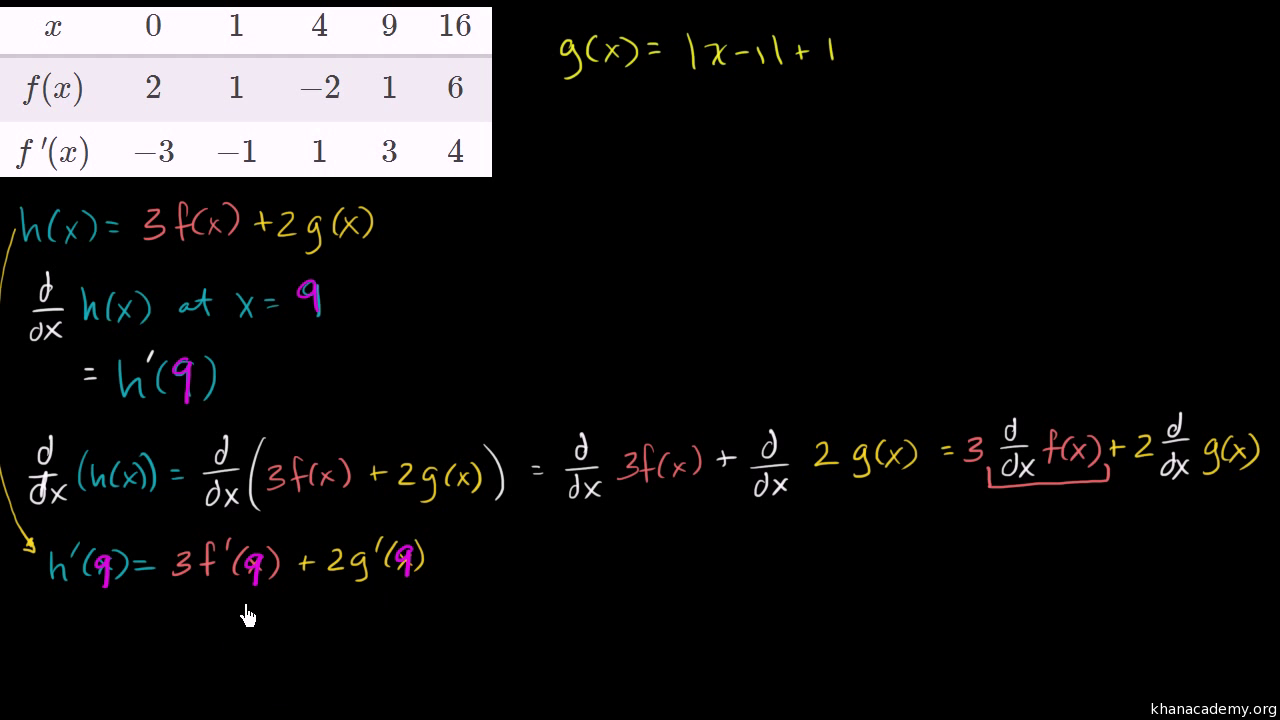



Basic Derivative Rules Table Video Khan Academy



Solved pc Unit 4 Functions 4 Functions H X 2x 3 The Graphs Of The Functions F And G Are Given Below K X X 3x 5 M X 4 X If X53 Course Hero




F X 9x 3 3x 2 X 5 G X X 2 3
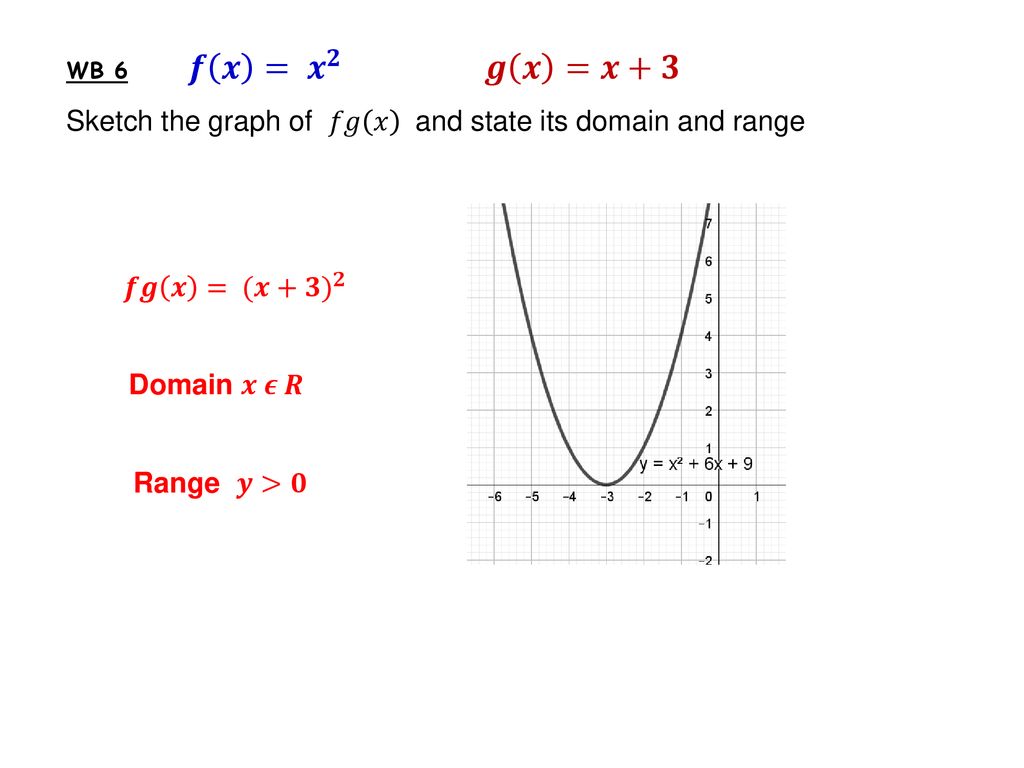



Functions Composite Ppt Download




Gcse Igcse Fm Functions Ppt Download




Basic Derivative Rules Table Video Khan Academy



Solved X 4 X 7 9 X 3 X Find Fg X 1 Point Select One A 12x 2 21 X 1 3 X 2 4 X 7 C 12 X 3 21 X 2 D 12 Course Hero




G X 2 1 2 X 1 3 Verify Transformation Of Key Points Between Functions Youtube




Given F 2 X G 2 X H 2 X 9 And U X 3f X 4g X 10h X Where F X G X And H X Are Continuous X R If Maximum Value Of U X Is
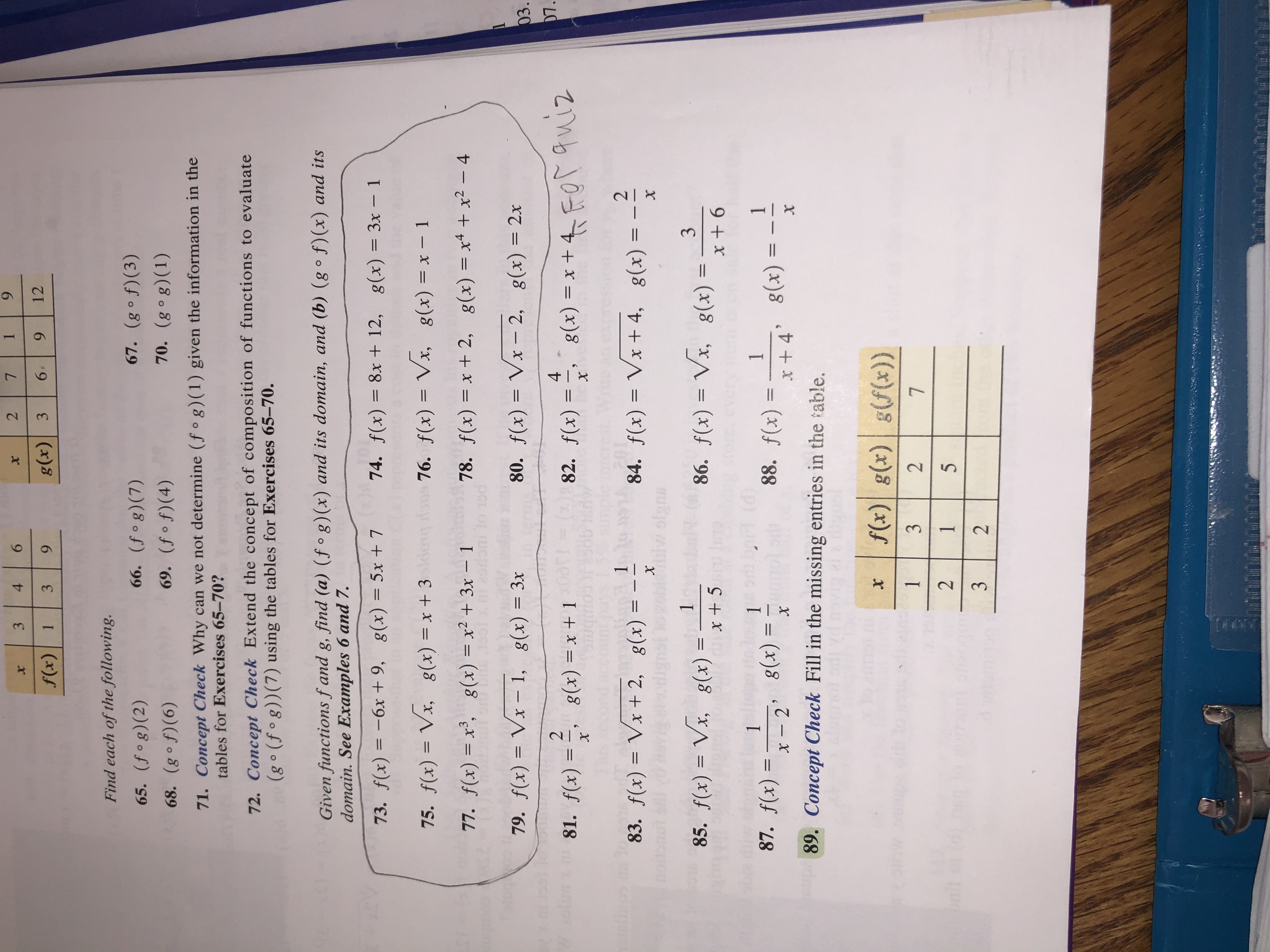



Answered 1 7 2 6 H 4 X 12 6 G X 3 F X 9 3 1 Bartleby




Let F X X 1 P X 2 Q Where P Gt 1 Q Gt 1 Each Critical Point Of F X Is A Point Youtube




Quiz Function Mathematics Mathematical Relations




F X X2 What Is G X G X 5 1 4 F X ܕ 5 O A G X 1x2 B G X 4x O C G X 4x O Brainly Com




If G X X 2 X X 1 And G F X 4x 2 10x 5 Then Find F 5 4




Find F G When F X X 2 5x 6 And G X 1 X 3 Brainly Com




If F G Rvecr Are Defined Respectively By F X X 2 3x 1 G X 2x
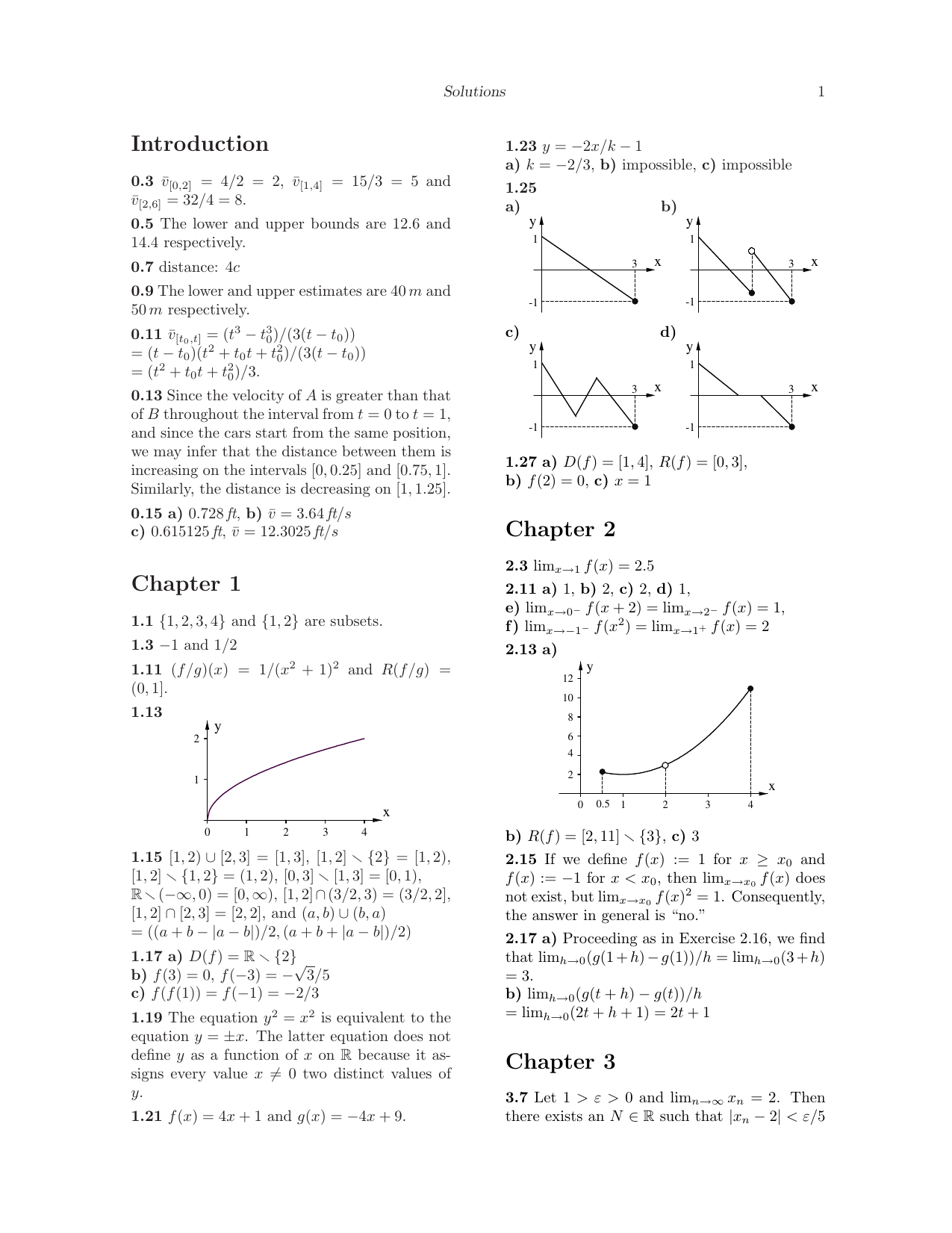



Introduction Chapter 1 Chapter 2 Chapter 3 Manualzz




If F X 3x 9 2x 4 2x 3 3x 2 X Cos 5 And G X F 1 X Youtube



No comments:
Post a Comment